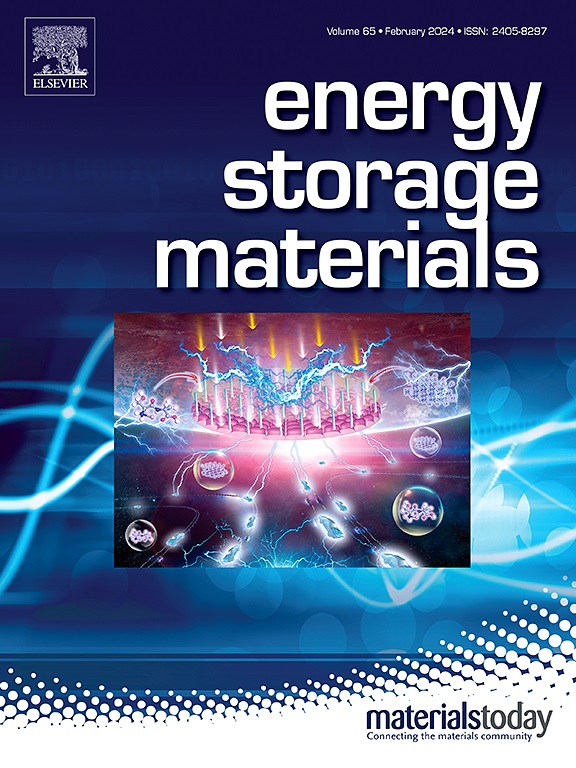Plasma-Enhanced Vacancy Engineering for Sustainable High-Performance Recycled Silicon in Lithium-Ion Batteries
IF 18.9
1区 材料科学
Q1 CHEMISTRY, PHYSICAL
引用次数: 0
Abstract
Silicon, renowned for its exceptional theoretical capacity, is a promising lithium-ion battery (LIB) anode material, yet its practical application is hindered by severe lithiation-induced volume expansion, structural instability, and high production costs. This study introduces a sustainable strategy to address these challenges by repurposing recycled photovoltaic (PV) silicon through a plasma-assisted vacancy engineering approach. By combining dielectric barrier discharge plasma-assisted milling with bismuth (Bi) modification, controlled vacancy defects are introduced into silicon microparticles, enhancing ion transport and mitigating internal stress. Bi further stabilizes the anode by absorbing mechanical stress and facilitating lithium-ion accommodation at vacancy sites. The resulting plasma induced silicon/carbon/bismuth composite demonstrates outstanding cycling stability and high-rate performance, retaining 1442 mA h g⁻¹ after 300 cycles at 0.5 A g⁻¹ and 525 mA h g⁻¹ after 1000 cycles at 7 A g⁻¹. This scalable and eco-friendly method not only overcomes the inherent limitations of silicon anodes but also transforms PV waste into high-performance LIB materials, advancing sustainable energy storage technologies.求助全文
约1分钟内获得全文
求助全文
来源期刊

Energy Storage Materials
Materials Science-General Materials Science
CiteScore
33.00
自引率
5.90%
发文量
652
审稿时长
27 days
期刊介绍:
Energy Storage Materials is a global interdisciplinary journal dedicated to sharing scientific and technological advancements in materials and devices for advanced energy storage and related energy conversion, such as in metal-O2 batteries. The journal features comprehensive research articles, including full papers and short communications, as well as authoritative feature articles and reviews by leading experts in the field.
Energy Storage Materials covers a wide range of topics, including the synthesis, fabrication, structure, properties, performance, and technological applications of energy storage materials. Additionally, the journal explores strategies, policies, and developments in the field of energy storage materials and devices for sustainable energy.
Published papers are selected based on their scientific and technological significance, their ability to provide valuable new knowledge, and their relevance to the international research community.
 求助内容:
求助内容: 应助结果提醒方式:
应助结果提醒方式:


